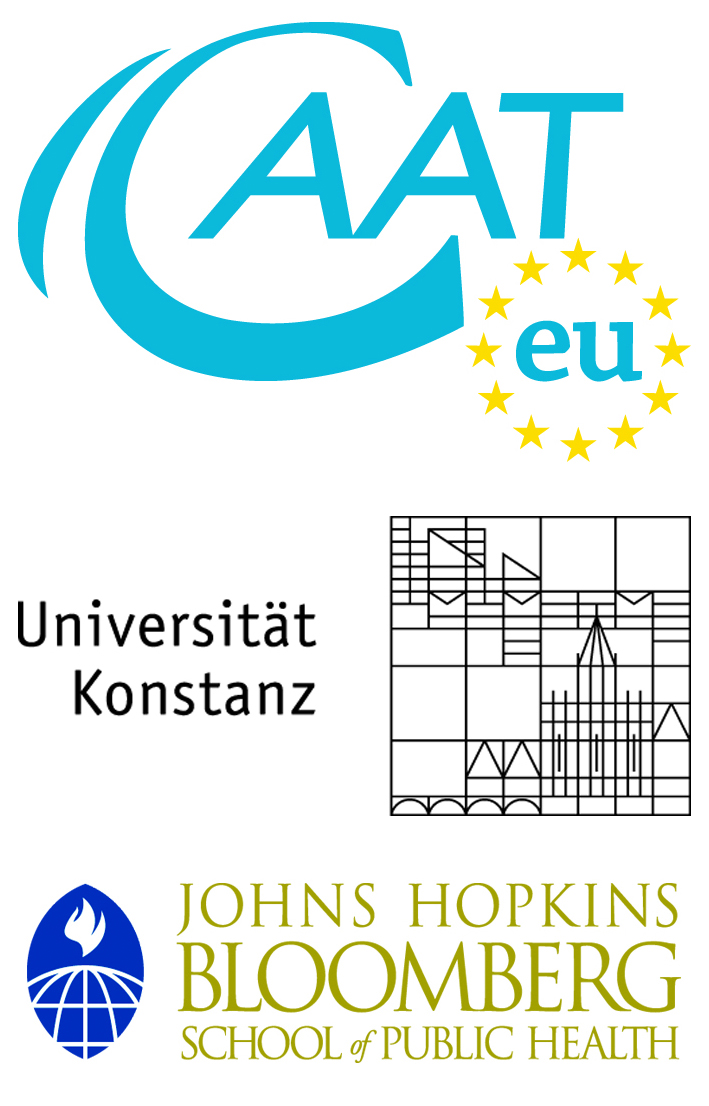TT21C in practice: Identification of adverse cellular endpoints in an in vitro framework for safety assessment
Workshop

Time and loacation:
12-14 June 2013, Mitland Hotel in Utrecht, the Netherlands
Goal of the workshop:
To improve the interpretation of in vitro-derived toxicity data by providing guidelines on the selection of appropriate Biomarkers of Toxicity and their values. A fundamental question is then: when is a change related to an adverse effect, and when should a change be interpreted as falling within the boundary of the physiologically “normal” adaptive range?
Workshop preparation and set-up:
This will be bringing together a group of maximal 15 experts from areas of in vitro toxicology, systems biology, pathophysiology, structure-activity relationships for a three-day meeting.
Participants are asked to be prepared for the discussions and to present cases in which the characterization of a proper division between appears to be either very obvious or problematic.
First day: short presentations on topics related to the above questions; presentation of cases: examples of successes and failures; discussions. Second day: In-depth discussions, formulation of texts for recommendations. Third day: Reaching conclusions, writing proposals for a report.
Outcome objective:
An expert report to be published in the peer-reviewed literature.
Coordinator:
Prof. Bas Blaauboer
Background:
In an earlier t4 workshop a conceptual framework for integrating in vitro-derived toxicity data was presented (Blaauboer et al, 2012). This framework takes into account the selection of a Biomarker-for (in vitro) Toxicity as the point-ofdeparture for a risk assessment, and also implies the use of appropriate kinetic information in a Quantitative in vitro-in vivo extrapolation (QIVIVE).
The use of cell cultures in toxicity testing of chemicals has the potential to provide a detailed picture of the changes of many parameters at once. Even if these changes show a clear concentration-effect relationship, care must be taken in interpreting the results in view of their relevance to the compound’s toxicity. Most likely, the sensitivity of these detailed studies will be much higher than what can be derived from the interpretation of apical endpoints in an animal
study, e.g. due to the lack of compensatory/homeostatic processes, usually working in vivo. The question is then: when is a change related to an adverse effect, and when should a change be interpreted as falling within the boundary of the physiologically “normal” adaptive or homeostatic range?
In analysing in vitro toxicity data it is important, then, to distinguish between adaptive changes and adversity. Within one given experimental system many possible relationships between a compound’s concentration and endpoint changes can be envisioned. For instance, different endpoints react at different compound concentrations.
Some of these changes will be a reflection of adaptation or they may be unrelated to the eventual cell fate, while others will be related to adversity or they reflect a pathway-of-toxicity (PoT) relevant for cell fate and for prediction to in vivo toxicity. Note that also the factor time will have an effect on the shape of the curves: duration of exposure, timing of (short-term) exposure, and timing of measurement. Moreover, since the different processes may have different dynamics and dynamic ranges, the types of phenomena observed will also change with time.
For each chosen BoT there will be a range of concentrations at which there is a measurable effect, which is within the normal physiological range and not related to the adverse effect that will occur at higher concentrations. As an example, if the chosen BoT is the inhibition of an enzyme activity, a relatively small inhibition would not result in cellular dysfunction, while higher levels of inhibition would do so. These considerations need to be taken into account when selecting a BoT and using it to determine the Point-of Departure (PoD) for evaluation of human risk.
One caveat in the use of in vitro systems is the absence of integrative systems occurring in more complex tissues, whole organs or the total organism, so it is important that mechanistically-based BoTs derived from non-animal systems are predictive for the adverse effect in the whole, integrated organism. It will be a challenge to select those BoTs and their relevant values to take both the inherent high sensitivity in vitro and the possible feedback loops present at higher levels of biological complexity into account. The use of in vitro methods is therefore complicated by a potential lack of interactions (i.e. between compounds and cells) that would otherwise be present at higher levels of biological integration. These feedback mechanisms should be considered when interpreting the results of in vitro toxicity testing for risk assessment. Organ slices have the capability to show the interaction of cells in their in situ tissue coherence, e.g. the hepatocyte-Kuppfer cells in liver slices. Examples exist where these interactions are studied by employing in vitro co-cultures of in vitro systems consisting of the relevant cells. The human- or organ-on-a chip techniques provide another example where different cell cultures can be employed at once, offering a more integrated in vitro system. New and developing methods allow these integrative effects to model the whole organism There are many different options for studying toxicologically relevant effects in vitro. However, the interpretation of data with regard to the difference between adversity and adaptation is still a challenge: to address it would make in vitro data more applicable for assessing risks.
